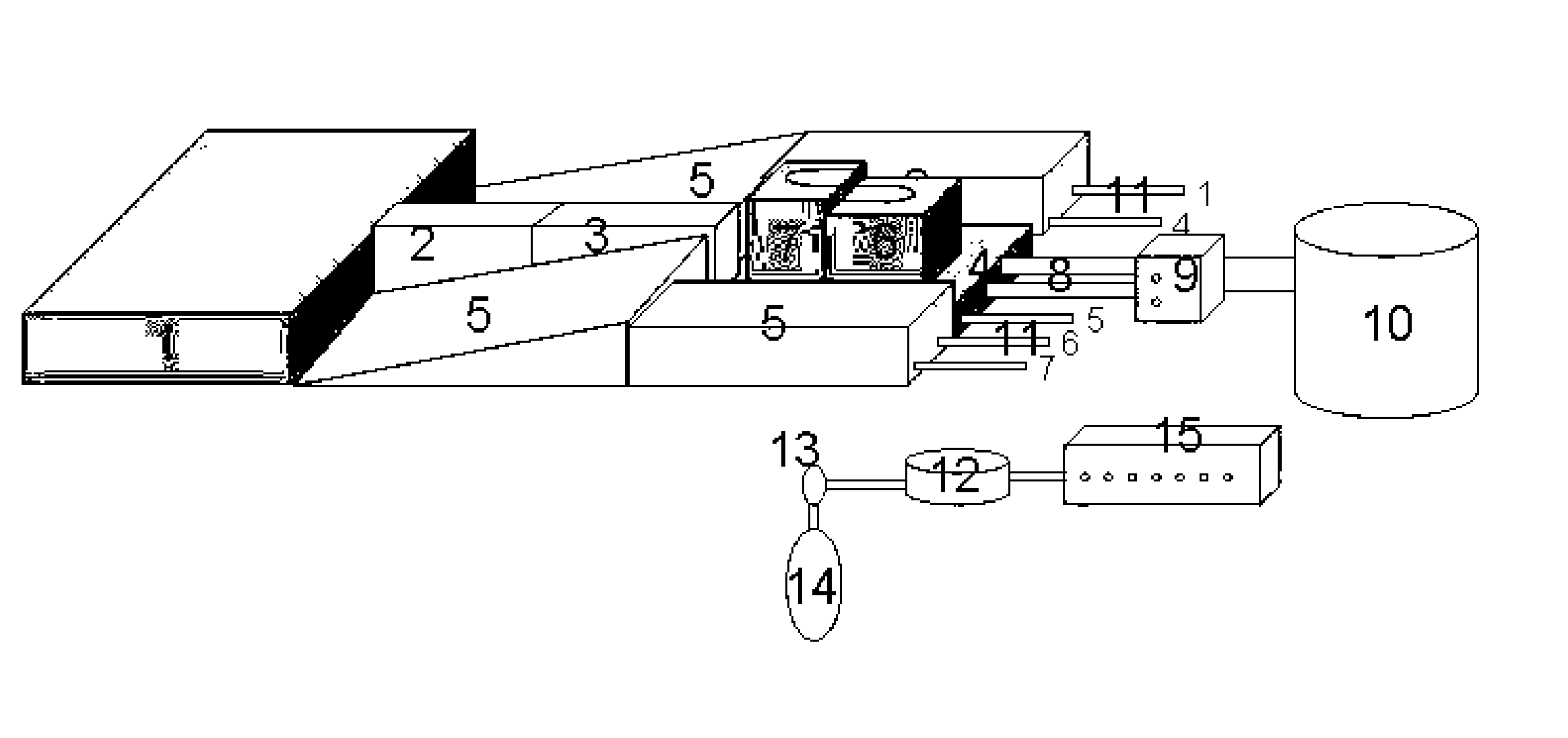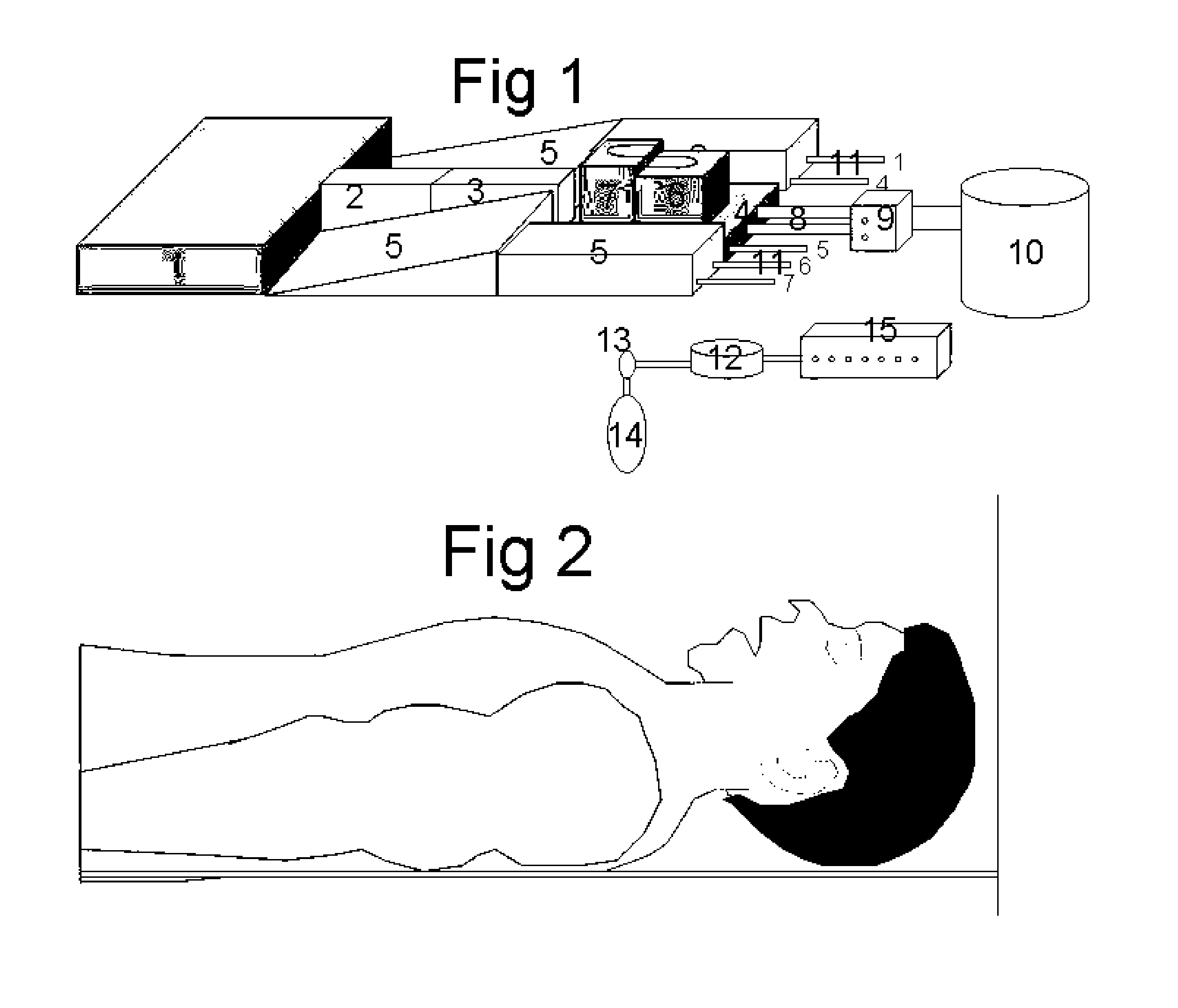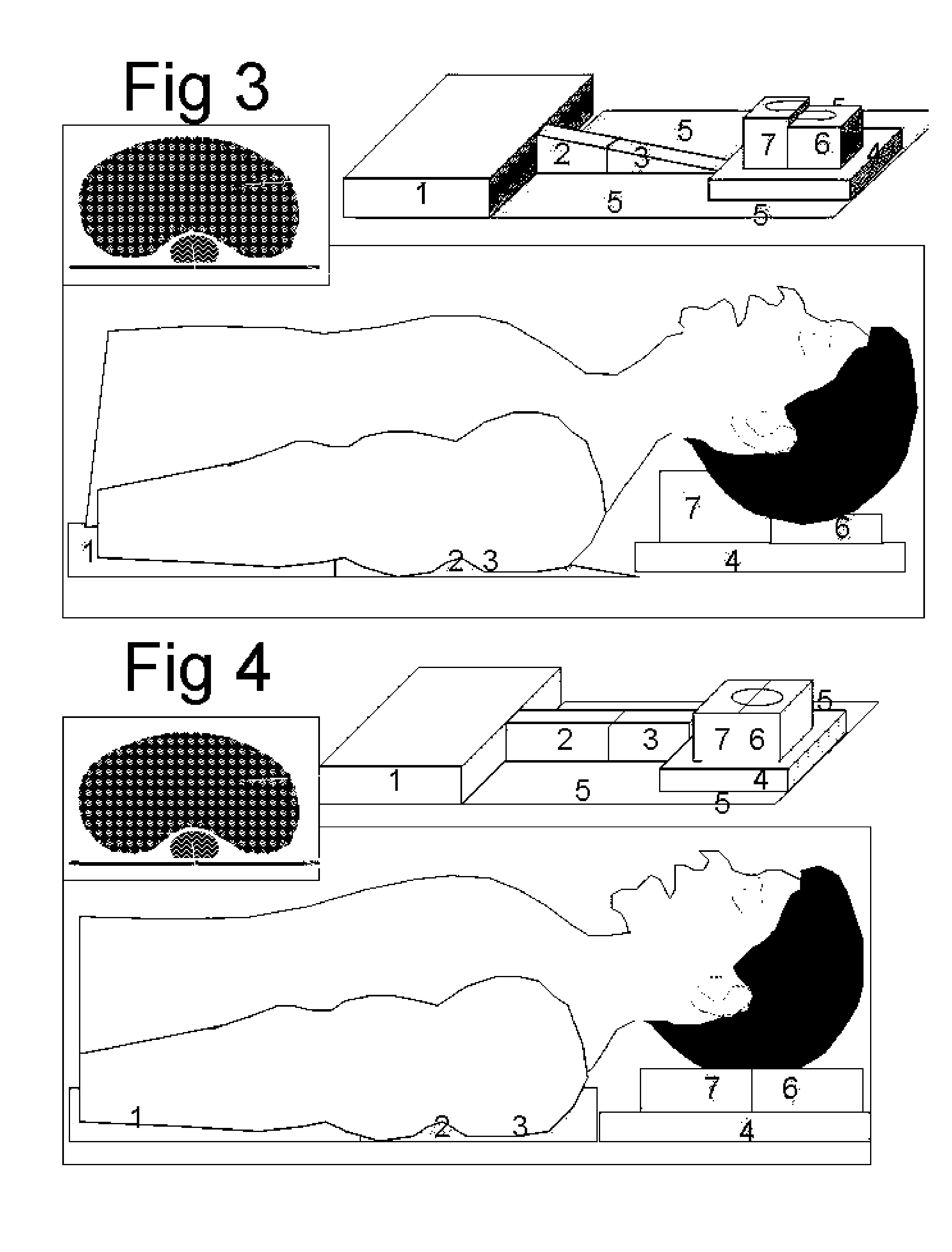[0002] The
system and method of this invention can be used in three different ways for patients who are lying down in
supine position in
bed or on the
operating table. First it facilitates the endotracheal intubation, secondly it facilitates the spontaneous breathing of obese patients and thirdly it assists the spontaneous inspiration and expiration in a non-invasive way. The sniffing position is the ideal position to visualize the vocal cords during laryngoscopy for intubation of the trachea with an
endotracheal tube. The sniffing position consists of a pillow under the head to elevate the head and to improve the alignment of the tracheal axis, pharyngeal axis and axis of the mouth. However these positions do not guarantee always a good
visualization, certainly in the obese patients with a short neck where elevation of the upper thorax can help. Instead of elevating the total upper thorax as described until now a folded
blanket put under the spinal column of the thorax elevates only the trachea to anterior and stretches the neck.
[0003] More exactly the inventor found that elevation of the thoracic spinal column moves the trachea anterior and elevation of the lower thoracic and abdominal spinal column rotates the tracheal axis more in line with the pharyngeal axis. This position together with an elevation and a
hyperextension of the head improves further the alignment of the axes and facilitates the laryngoscopy. In most
anesthetic courses of intubation however the opposite is learned, because elevation of the upper thorax rotates the trachea opposite and increases the angle between trachea and
pharynx, what makes that no one tried to elevate the lower thorax. Certainly in obese patients this helps. It is however difficult to position it before the patient is asleep, difficult to adapt the thickness and difficult to remove after intubation. This invented device is positioned flat under the patient before he is asleep without disturbing him. It allows a gradual elevation and rotation of the spinal column at the desired level of the thorax, a gradual elevation of the head to flex the neck and a gradual
hyperextension of the head created by an extension at the atlanto-axial joint. After intubation the position is returned to normal without need of removing the invented device. The device has extra
inflatable compartments to elevate the upper thorax if necessary as during trendelenburg position for preventing the patient to slide of the table. A first longitudinal
balloon consisting of two compartments, an upper under the upper thorax and a lower under the lower thorax and
abdomen is positioned in the length under the spinal column and allows a gradual elevation by inflating both compartments and tilting of the thorax by inflating the
lower compartment more than the upper compartment. A second half circular
balloon tube under the upper part of the head stabilizes the head and allows a gradual elevation of the head to achieve the sniffing position and a third half circular
balloon under the lower part of the head gives a gradual hyperextension of the head. The four gradual movements allow a better ideal alignment of the tracheal axis, the pharyngeal axis and the mouth axis and facilitate intubation. This is the first way to use this invention.
[0004] After the intubation all balloons except the lower under the
abdomen are emptied what facilitates central
venous puncture if required. During the operation inflation of two triangular balloons under the shoulders, together with an inflation of the head support allow stabilization of the upper thorax and prevention of gliding of the table required in extreme trendelenburg position.
[0005] Spontaneous breathing is easiest when staying upright, certainly when people have to speak, to sing or to blow on an instrument. Total
lung capacity decline when a person is lying down and this is certainly true for obese patients. Some persons prefer some extra pillows or want to sleep in a half sitting position. When an obese patient with a hollow back at his thoracic level is lying down, the weight is supported by the ribs of the right and the left side of the thorax and compresses the thorax to a smaller volume. At each inspiration more force is needed to rotate the ribs and to elevate the heavy thorax than when the right and left side of the thorax can move free.
[0006] This invention can elevate the spinal column at the upper and at the lower thoracic level and therefore the thorax is no more compressed and the ribs can move free. Inspiration requires less force and the patient can be breathing easier even when lying down. Obese and non-obese patients can benefit from this
support system according to the hollow structure of their back. This is the second way to apply this invention.
[0007] In this invention the upper and lower spinal column elevation system can also be inflated in a synchronized way with the
respiration of the patient. During inspiration the spinal column is elevated increasing the
lung capacity, increasing the thoracic compliance and facilitating the inspiration. The ribs rotate due to loss of weight comparable with the action of the inspiratory muscles of the
thoracic wall.
During expiration the elevation is lowered, compressing the thorax, lowering the compliance and therefore facilitating the expiration. The ribs rotate back opposite to the action of the inspiratory muscles. The
work of breathing is reduced for the patient resulting in larger minute volume ventilation or less
oxygen consumption.
 Login to View More
Login to View More  Login to View More
Login to View More 


